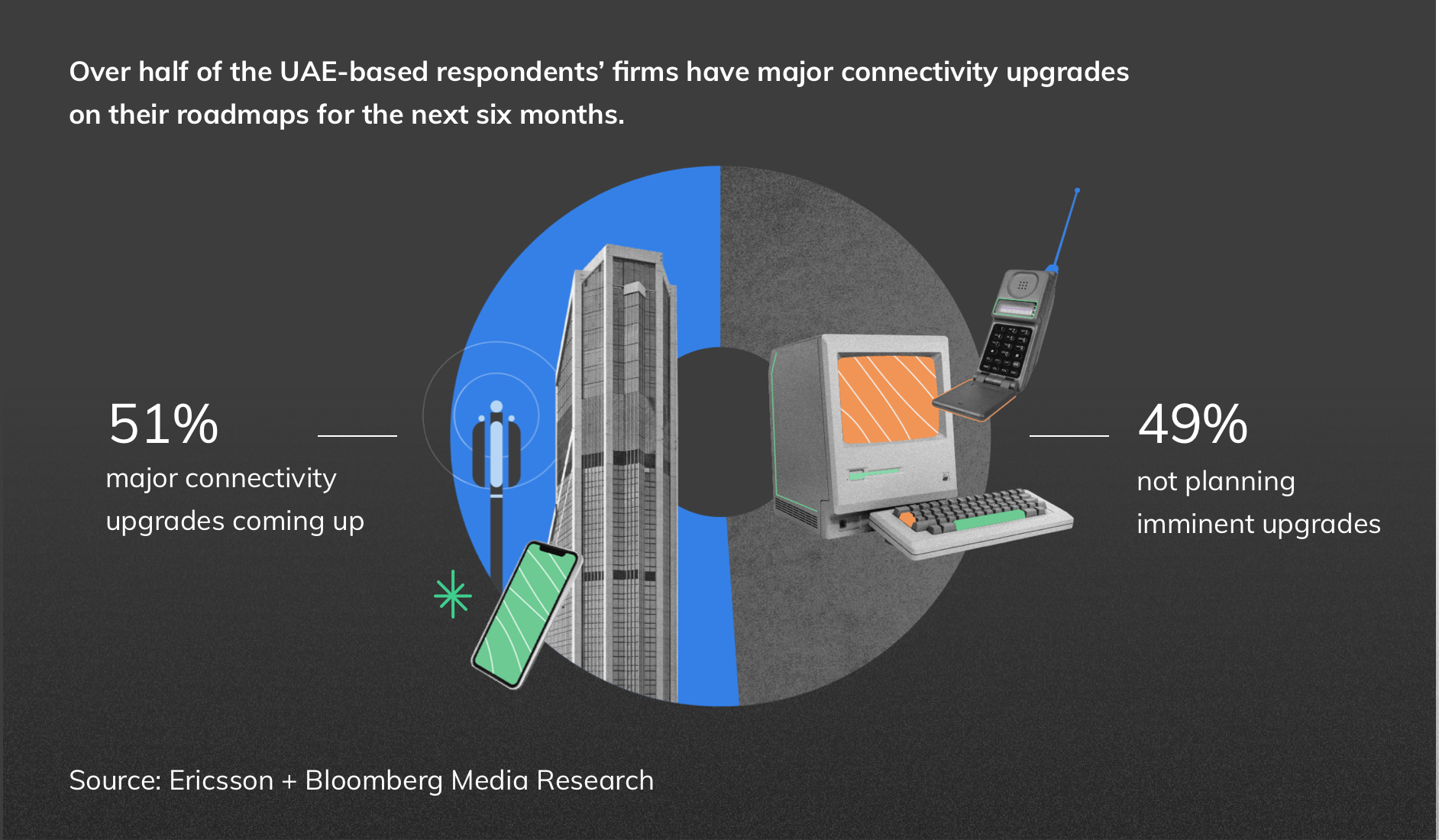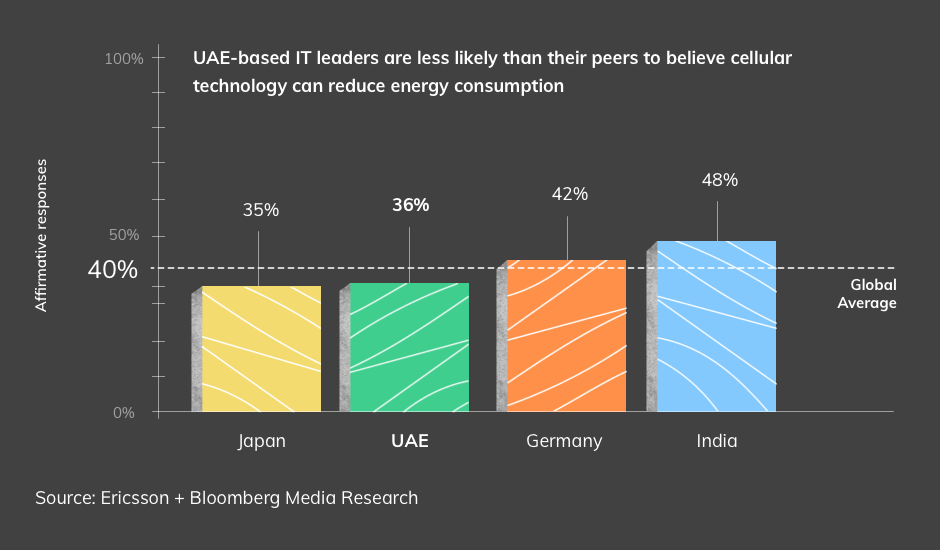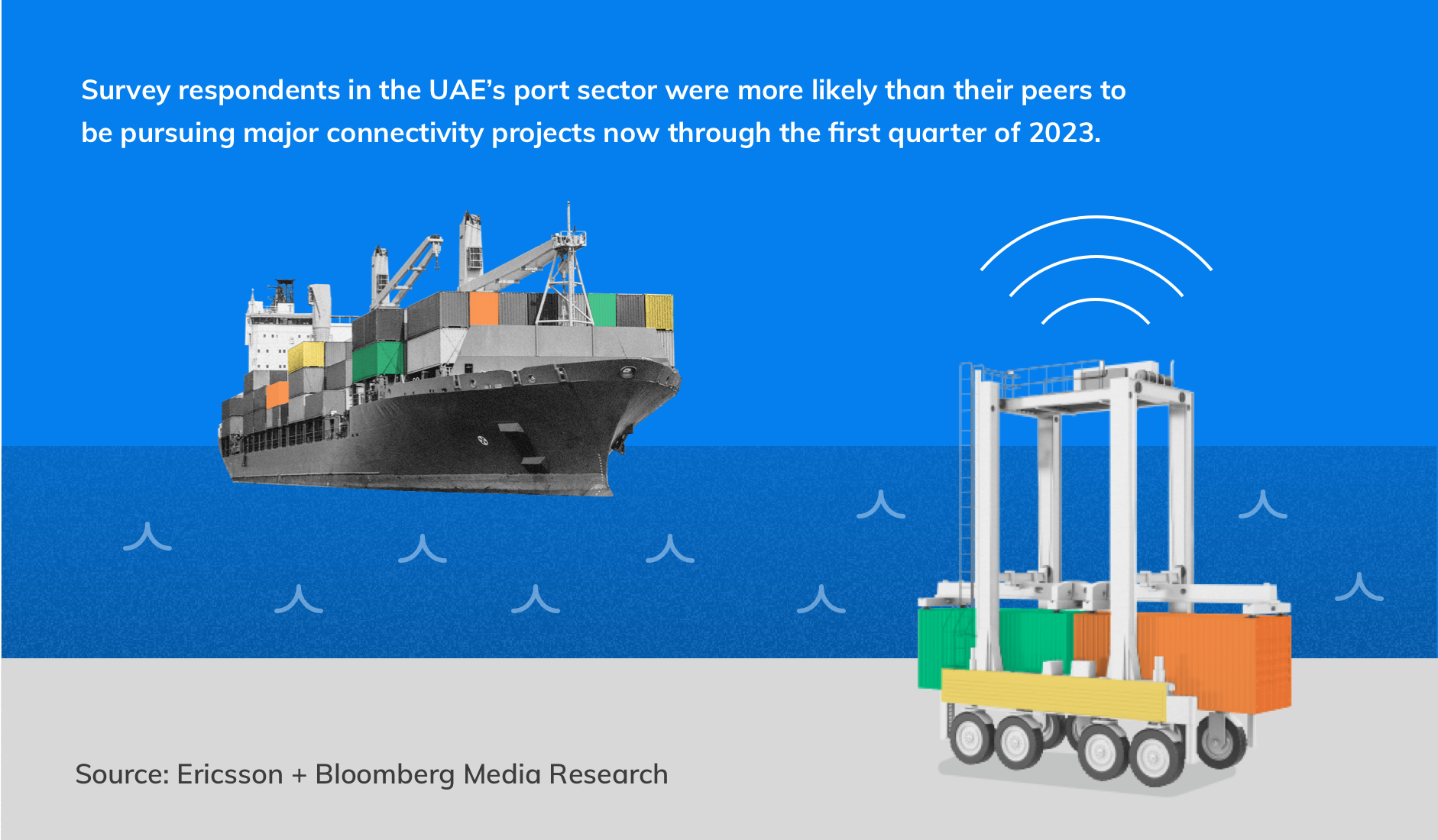Connectivity Will Shape the UAE’s Sustainability Journey
As the Gulf nation’s enterprises go green, cellular technology opens up new opportunities for growth.
As host of COP28, the UAE has just under a year to confront a question faced by previous hosts of the global climate confab: How to connect good intentions for sustainability to real, boots-on-the-ground endeavors to effect change.
Efforts are already underway. In November, Abu Dhabi instituted the Emirates’ first carbon offset exchange—a voluntary exchange that is part of an Emirates-wide effort to promote ESG disclosures as the country works towards achieving carbon neutrality by 2050.
And the UAE is beginning to harness another force to make these strides possible: cellular technology.
A recent survey of 400 senior IT decision makers across the United Arab Emirates, Japan, Germany and India, conducted by Bloomberg Media Studios in partnership with Ericsson, reveals the IT community’s perspective on the role of cellular technology in business operations—including corporate sustainability efforts and carbon-emission reductions.
The results point to an embrace of connectivity—a major vote of confidence for 5G’s potential within business in a region that already ranks in the global top 10 for both 5G availability and reach, according to Bloomberg Intelligence.

Less than 30 percent of UAE-based respondents said that they believe that cellular technology has the capacity to reduce carbon emissions, however, reflecting what Ekow Nelson, Country General Manager of Ericsson United Arab Emirates, says is a common view—but one that overlooks the energy-saving potential of increased connectivity.
“Awareness of and infrastructure for carbon offsets is an important first step. We also have more work to do in demonstrating that digital transformation has a sustainability pay-off.”

Nelson says that the sustainability benefits of 5G lie in its ability to help organizations make energy-intensive processes more efficient, from powering VR- and AR-augmented apps for site inspections that reduce the need for intercontinental business flights, to enabling cell towers to utilize edge computing to optimize energy use and limit need for onsite maintenance.
“With the pace of these connectivity upgrades on the horizon for the UAE, many of the sustainability benefits will reveal themselves,” Nelson predicts.

Connecting the dots between 5G and sustainability
Because past mobile network upgrades—from 2G to 3G and from 3G to 4G—have increased energy usage, it’s vital that leaders take advantage of the energy-saving capabilities of 5G to break the cycle, says George Mulhern, Senior Vice President and Head of Business Area Enterprise Wireless at Ericsson.
It’s an approach that Ericsson refers to as “breaking the energy curve”—that is, ensuring that the graduation to 5G does not increase overall energy use as previous upgrades in mobile technology have done.
Ericsson is utilizing connectivity to support sustainability efforts via new UAE-based projects such as the recent radio system rollout in the region, which vastly improved network energy efficiency. Initial deployment of the latest Ericsson Radio System portfolio resulted in energy-consumption reductions of up to 52 percent—the equivalent of 7.6 tons of emissions.
Projects like these demonstrate that it’s possible for enterprise users to achieve lower latency and power a diversity of devices even while shrinking their carbon footprint, says Mulhern.
“We place a priority on breaking the energy curve, and what’s happening in the UAE is a great example. As the region takes full advantage of its competitive 5G capabilities, we want to show how with the right approach, that can actually mean using less energy, not more.”

UAE’s ports are driving the push for greater connectivity
The UAE is home to a dozen bustling seaports which, according to the Bloomberg Media Studios IT survey, are driving demand for improved connectivity in the region.
Dubai’s Port of Jebel Ali is the largest container port between Singapore and Rotterdam, and Abu Dhabi’s Port of Mina Zayed has the capacity to handle nearly a million tons of cargo each year.

The importance that these centers hold in the UAE economy—and the global supply chain—likely explains the additional urgency that UAE-based IT leaders in the ports sector are feeling around connectivity upgrades, Mulhern says.
As IoT sensors are playing an increasingly important role in enabling ports to operate at peak performance, many IT leaders are focused on increasing automation—and require connectivity upgrades to achieve those aims.
These high-tech portals to the gulfs that connect the UAE to the Indian Ocean can also become models of sustainability. Mulhern cites growing trends in the shipping and ports sector to deploy digital twins and other sensor-based networks that govern a precise flow of ships into bays and cargo trucks out onto highways—reducing idle time that can make ports clusters of carbon emissions.
“Any port-based economy has a real opportunity to make a sustainability impact by exploring what’s possible with 5G,” Mulhern says, pointing to the bevy of upgrades indicated in the IT survey as a positive sign. “Increased connectivity can facilitate increased volume, which can boost nearly every sector in the region—and by tapping into the energy-saving benefits of 5G, the UAE can grow its economy and continue making strides in sustainability.”
